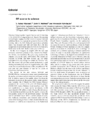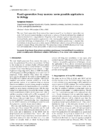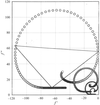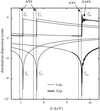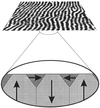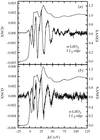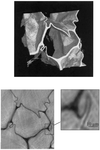issue contents
May 2000 issue
Synchrotron Radiation Satellite Meeting of the XVIII IUCr Congress
Daresbury Laboratory, UK, 1-4 August 1999

Cover illustration: Daresbury Laboratory, venue for the Synchrotron Radiation Satellite Meeting of the XVIII IUCr Congress, 1-4 August 1999.
facility information
editorial
Free 

research papers
Properties of X-ray free-electron laser radiation are reviewed briefly. Two applications to biology are discussed – measurement of Brownian motion in protein crystals using X-ray photon correlation spectroscopy, and the use of Mössbauer radiation for MAD phasing and possibly for photon echo measurements.
The performance of in-vacuum undulators is described, particularly of the mini-gap type. Also described is the essence of the new concept for synchrotron radiation facilities, the so-called new third-generation light source.
The feasibility and review of long wavelengths and the use of anomalous dispersion is given. The instrument ID1 at the ESRF is a most promising tool for soft X-ray diffraction studies using the MAD method in structural studies and DAFS for site-selective spectroscopy.
A review of anomalous scattering in chemical crystallography is given. Two case studies, involving metal-substituted molecular sieves, are then described in detail.
A brief survey of methods in ab initio phasing of one-wavelength anomalous-scattering data is given.
The availability of intense white X-rays from synchrotron radiation sources has greatly improved both acquisition and quality of anomalous X-ray scattering measurements. A demonstration is given of the usefulness of the anomalous X-ray scattering method for determining three partial structural functions of liquid matter by some selected examples of molten salts such as CuBr and RbBr.
Area detectors and synchrotron X-ray sources have greatly reduced the time required to determine charge-density distributions experimentally. Some chemical applications of the method are described.
A review is given of the results and lessons arising from a sustained in situ diffraction study of the structure and performance of functional ceramic/cementitious materials in which synchrotron-based energy-dispersive diffraction has been the central under-pinning technique.
The method of circular dichroism in X-ray resonant magnetic scattering is presented and applied to determine the magnetization profile of FePd films.
X-ray natural circular dichroism has been recently detected in the XANES region for uniaxial and biaxial gyrotropic crystals. Chiral-EXAFS spectra are reported for the first time over a wider energy range and are analysed in terms of multiple-scattering paths of relevant symmetry.
The wavelength of the 14.4 keV Mössbauer photon has been determined by using undulator radiation and diffraction of FZ silicon crystals. The mean wavelength was 0.08602557 nm with an uncertainty of 0.6 p.p.m., derived from 16 measurements of three pieces of FZ Si(840) crystals.
The modern synchrotron radiation sources deliver highly coherent X-ray beams, associated with the small angular size of the source. The use of these beams for X-ray imaging leads to very original results. This is illustrated with examples recorded at the long (145 m) beamline, mainly devoted to imaging, at the ESRF.


 journal menu
journal menu

















